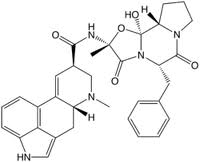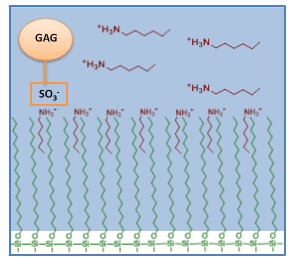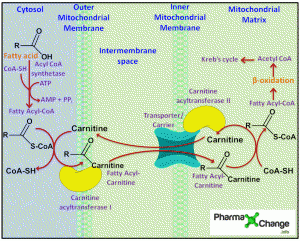THE TERTIARY STRUCTURE:
The overall folding of the polypeptide chain yields its tertiary structure. The tertiary structure refers to the overall conformation of a polypeptide chain-that is the three dimensional arrangement of all its amino acid residues. The tertiary structure is primarily stabilized by hydrophobic interactions between the non-polar side chains, by hydrogen bonds between the polar side chains and by peptide bonds. These stabilizing forces hold elements of the
secondary structure- alpha helices, beta strands, turns and random coils- compactly together. Since the stabilizing forces are weak the tertiary structure of a protein is not rigidly fixed, but it undergoes continual and minute fluctuation. This variation in structure has important consequences in the function and regulation of proteins.
There are two important substructures within the tertiary structure which are of interest to study:
1. Motifs: They are particular combinations of secondary structures. In some cases, motifs are signatures for a specific function. E.g. of motifs are – the helix-loop-helix which is a calcium binding motif found in more than hundred
calcium binding proteins.
– zinc-finger motif: it is an alpha helix and two beta strands held together by a zinc ion. This type of a motif is most commonly found in proteins that bind to DNA or RNA such as steroid hormone receptors.
– coiled coil: two or more alpha-helices orient themselves around each other in a coiled coil manner.
Fig. 5 gives a visual idea of how each of these motifs looks.


Fig. 5 shows various kinds of motifs commonly found in proteins. (a) two helices connected with a helix-loop-helix motif commonly found in calcium-binding and DNA-binding regulatory proteins. (b) The zinc-finger motif which is present in many DNA-binding proteins that help regulate transcription. (c) the parallel two stranded coiled-coil motif characterized by two alpha-helices wound one around the other and is stabilized by interactions between hydrophobic side chains.
2. Domains: A domain is a compactly folded region of a polypeptide.
Often a domain is characterized by some interesting structural feature, such as, an unusual abundance of a particular amino acid (e.g. a proline rich domain), sequences common to many proteins (e.g. the Epidermal Growth Factor domain) or a particular secondarystructure domain (e.g. the zinc finger domain).
Domains are sometimes defined in functional terms on the basis of observations that an activity of a protein is localized to a particular region along the length of the protein (e.g. DNA binding domain).
Experiment: Functional domains are often identified experimentally by whittling down a protein to its smallest active fragments with the aid of proteases, enzymes that cleave the polypeptide backbone- and then checking individual fragments for particular activity.
Alternatively, the DNA, encoding a particular protein, can be subjected to mutagenesis so that segments of the
protein’s backbone are removed or changed. The activity of the truncated or altered protein product synthesized from the mutated gene is then monitored and serves as a source of insight about which part of the protein is critical to its function.
THE QUARTENARY STRUCTURE
Multimeric proteins consist of two or more polypeptides or subunits. Quaternary structure of a protein describes the number (stoichiometry) and relative positions of the subunits in the multimeric proteins (e.g. Haemoglobin is a tetramer consisting of two alpha and two beta subunits as can be seen in Fig.6) [1]

Fig. 6 shows the quaternary structure of haemoglobin which is a tetramer of two alpha and two beta subunits.
References –
- Harvey Lodish [et al.]: Protein Structure and Function. In: Molecular Cell Biology (5th ed.). New York, W. H. Freeman and Company, 2003, p.59.




Very helpful in study of Biochemistry &clinical pathology.very very thanks.
well written
Excellent article highlighting the way protein structure is defined. Gives a good understanding for the basics of structural biology.